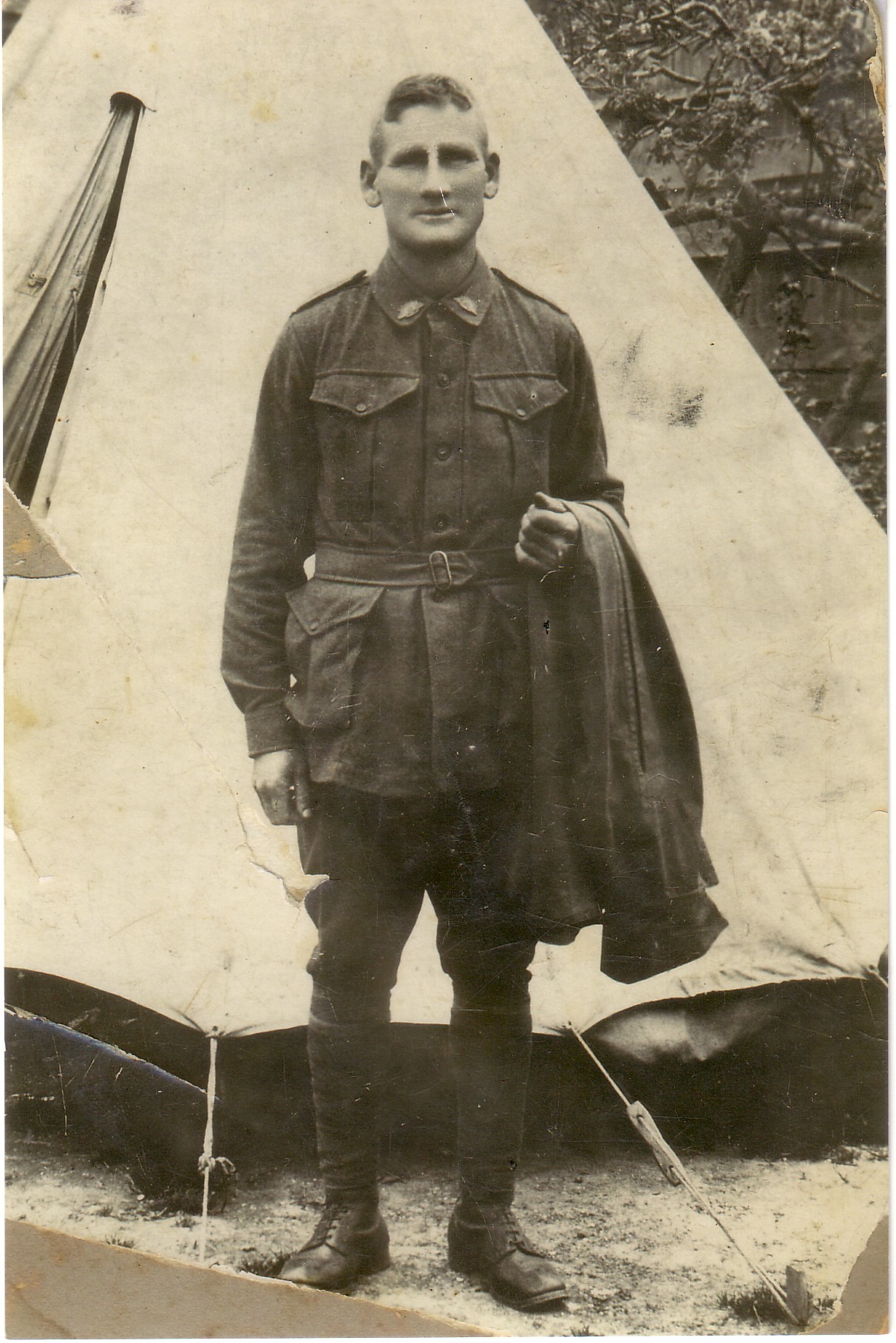Pte
Edward Williams
Informations sur naissance
|
Date de naissance: 26/05/1879 |
|
Lieu de naissance: Roma, Queensland, Australia |
Informations générales
|
Profession: Ouvrier |
Informations service militaire
|
Pays: Australia |
|
Force armée: Australian Imperial Force |
|
Rang: Private |
|
Numéro de service: 6688 |
|
Incorporation date: 03/02/1917 |
|
Incorporation nom de lieu: Liverpool, New South Wales, Australia |
|
Unités: — Australian Infantry, 35th Bn. (Newcastle's Own Regiment) (Dernière unité connue) |
Informations sur décès
|
Date de décès: 12/10/1917 |
|
Lieu de décès: Crest Farm, Passchendaele, Belgique |
|
Cause du décès: Killed in action (K.I.A.) |
|
Âge: 38 |
Mémorial
|
Ypres (Menin Gate) Memorial Panneau: 25J |
Distinctions et médailles 2
|
British War Medal Médaille |
|
Victory Medal Médaille |
Points d'intérêt 3
| #1 | Lieu de naissance | ||
| #2 | Lieu d'enrôlement | ||
| #3 | Lieu du décès (approximatif) |
Mon histoire
Private Edward Williams served in the Australian Infantry 35th Battalion, part of the 9th Brigade, of the 3rd Australian Division.
On the 12th of October 1917 the 3rd Australian Division participated in the First Battle of Passchendaele. A stage in the Third Battle of Ypres. The aim of the Division’s attack was to capture the village of Passchendaele. The Division advanced with two brigades, the 9th and 10th. The attack of the 9th Brigade, who was positioned just East of Tyne Cot Cemetery, was carried by the 34th and 35th Battalion.
At 5.25 am the 34th Battalion left their positions. The advance took place in total confusion, due to the heavy German shelling of the jumping-off lines. The 35th Battalion attacked in second line. Together they moved on towards the first objective. The 35th Battalion was able to overrun Defy Crossing, Hillside Farm and parts of Augustus Wood.
When the 34th had consolidated its objective, the 35th took over the attack and moved along the Passchendaele road towards Crest Farm. Crest Farm is situated on the Western outskirts of the village and was the 35th Battalion’s first objective. While going up the slope to Passchendaele the Battalion suffered heavy casualties, due to heavy German machine-gun fire. Patrols managed to enter Passchendaele itself and found it abandoned. However, they were not able to secure the village, as they lacked the manpower. At around 3 pm, both Battalions were pushed back to Augustus Wood, about 300 yards from where they had initially started.
According to a witness report from Private Hopper. He and Edward Williams had been wounded during the advance to Passchendaele and were lying in No Man’s land. No help was coming, as the Battalion had been forced back to Augustus Wood. Private Whopper was able to crawl back to the Allied lines before the Germans launched a counter attack in the area. But Private Edward Williams was too badly wounded and kept on lying in No Man’s Land. Private Edward Williams possibly succumbed to his wounds in No Man’s land. His remains were not found or were never identified and he is remembered on the Ypres (Menin Gate) Memorial.
On the 12th of October 1917 the 3rd Australian Division participated in the First Battle of Passchendaele. A stage in the Third Battle of Ypres. The aim of the Division’s attack was to capture the village of Passchendaele. The Division advanced with two brigades, the 9th and 10th. The attack of the 9th Brigade, who was positioned just East of Tyne Cot Cemetery, was carried by the 34th and 35th Battalion.
At 5.25 am the 34th Battalion left their positions. The advance took place in total confusion, due to the heavy German shelling of the jumping-off lines. The 35th Battalion attacked in second line. Together they moved on towards the first objective. The 35th Battalion was able to overrun Defy Crossing, Hillside Farm and parts of Augustus Wood.
When the 34th had consolidated its objective, the 35th took over the attack and moved along the Passchendaele road towards Crest Farm. Crest Farm is situated on the Western outskirts of the village and was the 35th Battalion’s first objective. While going up the slope to Passchendaele the Battalion suffered heavy casualties, due to heavy German machine-gun fire. Patrols managed to enter Passchendaele itself and found it abandoned. However, they were not able to secure the village, as they lacked the manpower. At around 3 pm, both Battalions were pushed back to Augustus Wood, about 300 yards from where they had initially started.
According to a witness report from Private Hopper. He and Edward Williams had been wounded during the advance to Passchendaele and were lying in No Man’s land. No help was coming, as the Battalion had been forced back to Augustus Wood. Private Whopper was able to crawl back to the Allied lines before the Germans launched a counter attack in the area. But Private Edward Williams was too badly wounded and kept on lying in No Man’s Land. Private Edward Williams possibly succumbed to his wounds in No Man’s land. His remains were not found or were never identified and he is remembered on the Ypres (Menin Gate) Memorial.
Sources 4
|
31st Australian Infantry Battalion, (Australian War Memorial, Campbell (AWM), AWM4 23/52/4). https://www.awm.gov.au/collection/C1338583 Sources utilisées |
|
Australian War Memorial https://www.awm.gov.au/collection/P11027285 Sources utilisées |
|
First Australian Imperial Force Personnel Dossiers, 1914-1920, (National Archives of Australia, Canberra (NAA), B2455, WILLIAMS E). http://recordsearch.naa.gov.au/SearchNRetrieve/Interface/SearchScreens/BasicSearch.aspx Sources utilisées |
|
McCarthy C., The Third Ypres Passchendaele. The Day-by-Day Account, (London, Arms & Armour Press, 1995), pg. 113-115. Sources utilisées |
Complément d’informations 4
|
Commonwealth War Graves Commission Database https://www.cwgc.org/find-records/find-war-dead/casualty-details/1601972 |
|
Namenlijst (In Flanders Fields Museum) https://namenlijst.org/publicsearch/#/person/_id=0748c1bf-b2c0-49e7-89de-57af06c7804f |
|
Lives of the First World War (Imperial War Museum) https://livesofthefirstworldwar.iwm.org.uk/lifestory/7278046 |
|
The AIF Project (UNSW Canberra) https://aif.adfa.edu.au/showPerson?pid=324598 |
